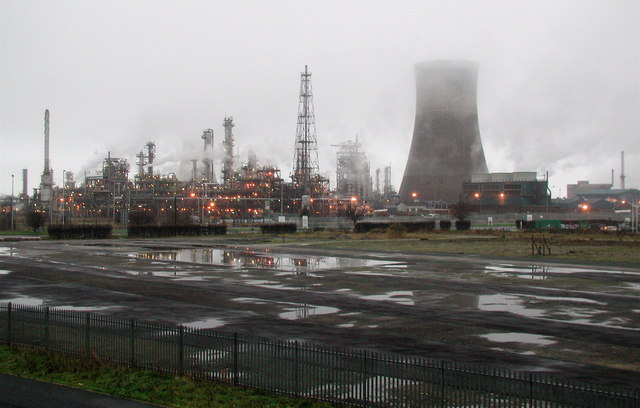
Fire Safety is a critical aspect of any industry, but it becomes even more crucial in high-risk sectors like the Oil & Gas industry, where flammable materials and hazardous operations pose significant fire hazards. Ensuring the safety of personnel, facilities, and the environment is paramount in this sector, and adopting proactive fire safety measures is imperative.
Introduction
The Oil & Gas industry plays a pivotal role in meeting global energy demands, but it is also associated with inherent risks, particularly regarding fire incidents. This article aims to explore the various aspects of fire safety in the Oil & Gas industry, from identifying common fire hazards to implementing preventive measures and advanced fire suppression systems.
Understanding the Importance of Fire Safety in the Oil & Gas Industry
The Oil & Gas sector deals with highly flammable substances and complex operations that can result in catastrophic fires if proper precautions are not taken. The potential for fires to cause severe damage to human life, equipment, and the environment underscores the need for stringent fire safety protocols.
Common Fire Hazards in Oil & Gas Facilities
3.1. Flammable Substances
Oil and gas are inherently flammable materials, and any leak or accidental release can lead to ignition. Proper storage, handling, and transportation of these substances are essential to prevent fire incidents.
3.2. Electrical Equipment
Electrical malfunctions can be a significant cause of fires in Oil & Gas facilities. Faulty wiring, overloaded circuits, and sparks can lead to ignition in hazardous areas.
3.3. Hot Surfaces and Machinery
The operation of machinery and equipment in the Oil & Gas industry can generate heat, which, if not properly managed, can trigger fires.
3.4. Welding and Cutting Operations
Welding and cutting activities produce intense heat and sparks, creating potential ignition sources if safety measures are not strictly followed.
Preventive Measures for Fire Safety
Implementing robust preventive measures is crucial to reducing the risk of fire incidents in Oil & Gas facilities.
4.1. Proper Training and Education
Ensuring that all personnel receive comprehensive fire safety training, including firefighting techniques and emergency response protocols, is essential to create a safety-conscious work environment.
4.2. Implementing Safety Policies and Procedures
Establishing clear safety policies and procedures and enforcing their adherence across all levels of the organization can significantly enhance fire safety.
4.3. Regular Maintenance and Inspections
Frequent inspections and maintenance of equipment and machinery can identify potential fire hazards and ensure that safety standards are upheld.
4.4. Using Fire-Resistant Materials
Incorporating fire-resistant materials in construction and equipment design can minimize the spread of fires and provide additional time for evacuation and response.
Advanced Fire Suppression Systems
To complement preventive measures, the Oil & Gas industry employs advanced fire suppression systems to detect and extinguish fires promptly.
5.1. Fire Detection and Alarm Systems
Sophisticated fire detection systems with real-time monitoring can quickly identify fire outbreaks, enabling swift response and containment.
5.2. Automatic Sprinkler Systems
Automatic sprinkler systems are effective in controlling fires, providing an initial response until firefighting teams arrive.
5.3. Gas Suppression Systems
Gas suppression systems can extinguish fires without damaging valuable equipment, making them ideal for sensitive environments.
Emergency Response and Evacuation Plans
Developing well-defined emergency response plans and conducting regular evacuation drills are essential components of fire safety.
6.1. Creating Emergency Response Teams
Designating trained personnel as part of emergency response teams ensures efficient coordination during fire incidents.
6.2. Evacuation Routes and Drills
Establishing clear evacuation routes and regularly conducting evacuation drills prepares personnel for a swift and organized response during emergencies.
Fire Safety Regulations in the Oil & Gas Industry
Compliance with fire safety regulations and standards is non-negotiable in the Oil & Gas industry.
7.1. Government Standards and Compliance
Adhering to national and international fire safety standards set by regulatory bodies is mandatory for all Oil & Gas companies.
7.2. Industry-Specific Guidelines
In addition to government regulations, the Oil & Gas industry often establishes its own guidelines to address specific fire safety challenges.
The Role of Technology in Enhancing Fire Safety
Technological advancements play a vital role in augmenting fire safety efforts in the Oil & Gas sector.
8.1. Drones and Remote Sensing
Drones equipped with thermal imaging and remote sensing capabilities can assess fire situations in real-time, aiding firefighting strategies.
8.2. IoT-Based Fire Safety Solutions
Internet of Things (IoT) devices and sensors enable seamless data sharing, enhancing the effectiveness of fire prevention and response systems.
Case Studies: Successful Fire Safety Practices
Learning from real-life experiences can offer valuable insights into effective fire safety practices.
9.1. Company A’s Fire Safety Program
A case study on how Company A successfully implemented a comprehensive fire safety program that significantly reduced fire incidents.
9.2. Company B’s Fire Incident Response
Company B faced a challenging fire incident that put their fire safety protocols to the test. This case study highlights their swift and effective response to mitigate potential disaster.
On a routine day at one of Company B’s offshore platforms, a small fire broke out near a critical piece of machinery. Thanks to the vigilant crew and the advanced fire detection system in place, the alarm was triggered immediately. The emergency response team swiftly arrived at the scene, equipped with firefighting gear and well-versed in emergency procedures.
The team isolated the affected area and quickly deployed the nearest automatic sprinkler system to control the flames. Simultaneously, they activated the gas suppression system to prevent the fire from spreading to nearby equipment. The combination of these two fire suppression methods proved to be highly effective in containing the fire.
Company B’s workforce was well-prepared for such incidents, having undergone regular fire safety training. The training covered proper evacuation procedures, the use of fire extinguishers, and communication protocols during emergencies. This preparation paid off during the incident, as everyone calmly evacuated the area following the established evacuation routes.
As the fire was being brought under control, the platform’s communication system efficiently alerted the onshore emergency response team. The onshore team was ready to offer support and coordinate additional resources, if required. Fortunately, the fire was contained quickly, and no injuries were reported.
The incident was thoroughly investigated to determine its root cause and to identify any areas for improvement. The findings were used to update the fire safety protocols and to enhance the training programs for all personnel.
This case study of Company B’s fire incident response serves as a valuable example of how meticulous planning, efficient communication, and well-trained personnel can avert potential disasters in the Oil & Gas industry.
Environmental Impact and Fire Safety
Beyond the immediate dangers posed by fires in the Oil & Gas industry, there is also a significant concern for the environment.
10.1. Preventing Environmental Disasters
Oil and gas fires have the potential to escalate into environmental disasters, causing harm to ecosystems, wildlife, and marine life. Preventing such incidents is of utmost importance to protect the environment.
10.2. Mitigating Damage to Ecosystems
In the event of a fire incident, swift action is necessary to prevent the spread of pollutants and hazardous materials into the environment. Oil spills resulting from fires can be particularly damaging, and proper containment measures must be in place to mitigate their impact.
Training and Development for Fire Safety Professionals
Ensuring that fire safety professionals are well-trained and continuously developing their skills is essential to keep up with industry best practices.
11.1. Fire Safety Certifications
Fire safety professionals should obtain relevant certifications that demonstrate their expertise and knowledge in handling fire-related incidents. Certifications ensure that they are up-to-date with the latest safety protocols and techniques.
11.2. Continuous Learning and Improvement
The field of fire safety is ever-evolving, with new technologies and methods emerging regularly. Fire safety professionals should engage in continuous learning to stay abreast of these advancements and adapt their practices accordingly.
Future Trends in Oil & Gas Fire Safety
The Oil & Gas industry, like any other, is poised for technological advancements that will shape the future of fire safety.
12.1. AI and Machine Learning Applications
Artificial Intelligence (AI) and Machine Learning (ML) can analyze vast amounts of data in real-time, providing predictive insights to anticipate fire hazards and potential risks.
12.2. Sustainable Fire Suppression Methods
Researchers are exploring environmentally friendly fire suppression methods that do not release harmful chemicals into the atmosphere, aligning fire safety efforts with broader sustainability goals.
Conclusion
In conclusion, fire safety in the Oil & Gas industry is a multifaceted endeavor that demands proactive measures and constant vigilance. Identifying common fire hazards, implementing preventive measures, adopting advanced fire suppression systems, and prioritizing emergency response and evacuation plans are vital components of comprehensive fire safety protocols. Compliance with regulations, leveraging technology, and learning from successful practices further bolster fire safety efforts. By prioritizing the safety of personnel, facilities, and the environment, the Oil & Gas industry can continue to drive global energy supply while minimizing the risk of fire incidents.
FAQs
- Q: What are some common fire hazards in the Oil & Gas industry?A: Common fire hazards in the Oil & Gas industry include flammable substances, electrical equipment malfunctions, hot surfaces, and welding operations.
- Q: How can technology enhance fire safety in the industry?A: Technology can enhance fire safety through drones for real-time monitoring and IoT-based systems for seamless data sharing and analysis.
- Q: What are some preventive measures for fire safety?A: Preventive measures include proper training, safety policies, regular maintenance, and using fire-resistant materials.
- Q: Why is fire safety important for the environment?A: Fires in the Oil & Gas industry can cause environmental disasters, leading to damage to ecosystems and wildlife.
- Q: What is the role of fire safety certifications for professionals?A: Fire safety certifications demonstrate expertise and ensure professionals are up-to-date with industry best practices.
























